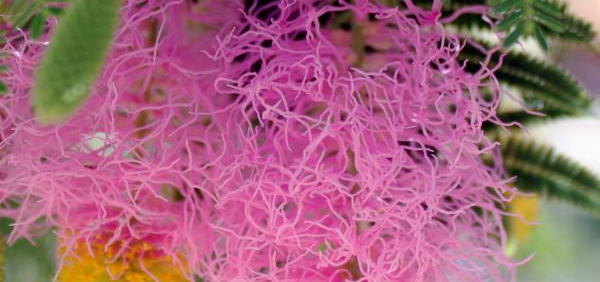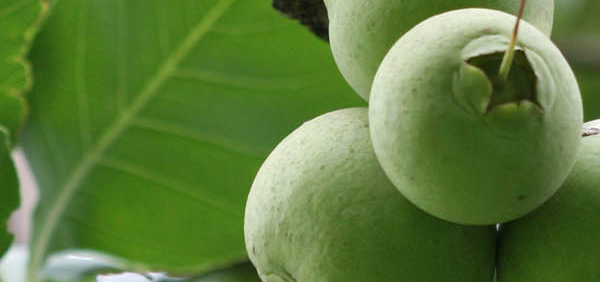ikshvaku :

Taxonomical Classification
Kingdom: Plantae - Plants
Class: Magnoliopsida - Dicotyledons
Family: Cucurbitaceae
Genus: Lagenaria
VERNACULAR NAMES
English: bottle gourd Calabash gourd, long melon, white flowered gourd bitter calabash gourdHindi: titalouki, kadavi louki, lauki
Urdu: lauki
Telugu: sorekaya, sorakkaya
Bengali: titlaou, ladu
Marathi: dudhi
Gujarathi: kadavi tumbadi, dudhi, tumada
Tamil: surakkai
Malayalam: Churakka, Peechura, Garadudi, Kaippachura, Pechura, Bellashora, Chura
Kannada: sorekai, sorekayi
Assamese: Pani-lao, Jati-lao
French: Gourde, calebasse, courge bouteille
Definition
सिद्धं वक्ष्याम्यथेक्ष्वाकुकल्पं येषां प्रशस्यते|३|
लम्बाऽथ कटुकालाबूस्तुम्बी पिण्डफला तथा||३||
इक्ष्वाकुः फलिनी चैव प्रोच्यते तस्य कल्पना|४|
Synonyms
Synonyms in Ayurveda: ikshvaku, katu tumbi, alabu, tiktalabu, ikshyakuRasa: Tikta
Guna: Laghu Ruksha
Veerya: Sheetha
Vipaka: Katu
Karma: Vathakaphahara Vishahara-Anti toxic,
Propogation:
Bottle gourd is propagated by seed, which is often sown directly. Transplanting is possible if seed is scarce. As no commercial cultivars are available in Africa, farmers carefully select dried intact fruits for seed for the next crop. The seeds are often preserved in the intact fruits. For vegetable use, non-bitter types are selected by scratching the surface or chewing the leaves. The weight of 1000 seeds is about 150 g. Planting normally takes place with the onset of the rainy season. Seed dormancy often occurs. A heat treatment of 50°C for 7 days markedly increases the germination rate. Bottle gourd is often planted near the homestead. During the wet season it is often planted on mounds, in the dry season in depressions. It is sometimes intercropped with other vegetables and grain crops, especially pumpkin. Per hole 2–3 seeds are sown, at a spacing of 1 m in the row and 2 m between rows. Weak or diseased seedlings are thinned out 3–4 weeks after sowing, leaving one plant per hole. Spontaneous plants in fields are often retained. In cattle-herding communities such as the Maasai of Kenya, bottle gourd arises spontaneously along the fences of cattle enclosures where there is ample manure and enough moisture. Plants with large elongated fruits can occasionally be found on fences in abandoned homesteads. In Asia special vegetable cultivars are commercially grown on stakes or trellises, using the same cultural practices as for cucumber.Harvesting:
For use as a vegetable, fruit harvesting starts three months after sowing. Young fruits of all ages are edible and may be picked, including the ovary of the flower. Continuous picking of young fruits prolongs crop duration and as many as 20 pickings may be possible. Fruits are best harvested with a sharp knife, leaving about 5 cm stalk on the fruit. Leaves are picked from 2-month-old plants onwards.For seed production fruits are harvested when fully mature. Fruits are mature when the shell hardens and outer and inner layers start to yellow. This stage can be determined by scratching the fruit thinly to expose the inner yellow part. For use as containers, fruits are permitted to mature completely on the plant.
Phytochemistry:
the bitter principle of Cucurbitaceae such as the triterpenoid cucurbitacins, B, D, G, H, and 22‐deoxycucurbitacin, are also present in the fruit.Parts used for medicinal purpose
Fruit, Leaves, Root tuber, ,Dosage:
fresh juice 10 - 20mlSubstitute:
In cooking, pumpkin leaves can be used as a substitute for bottle gourd leaves. The seeds can be replaced by seeds of other Cucurbitaceae species, e.g. Citrullus lanatus (Thunb.) Matsum. & Nakai, Cucumeropsis mannii Naudin, Cucurbita maxima Duchesne. For storage purposes, it can be replaced by the fruits of the tree calabash (Crescentia cujete L.) or by containers made of other materials.Morphology:
Monoecious, annual, climbing or trailing herb, with proximally bifid tendrils. Leaves alternate, simple; stipules absent; petiole 2.5–12.5 cm long, pubescent, with a pair of tiny glands at apex; blade broadly ovate to kidney-shaped in outline, 3–33 cm × 4.5–33 cm, undivided or shortly palmately 5–9-lobed, cordate at base, shallowly sinuate-dentate, palmately veined. Flowers unisexual (rarely bisexual), solitary in leaf axils, regular, 5-merous, up to 15 cm in diameter; receptacle tube obconic-cylindrical, 1–1.5 cm long, lobes remote; petals free, white; male flowers on long pedicels 7–31 cm long, with 3 free stamens inserted on the receptacle tube, connectives broad; female flowers on short pedicels 2–10 cm long, with inferior, densely hairy ovary, stigma 3-lobed, thick, each lobe 2-lobed. Fruit a berry, very variable in size and shape, often globular, bottle- or club-shaped, up to 1 m long, white-yellow to dark green when young, sometimes whitish speckled, usually brown when mature and dried, with hard, durable rind, flesh white and soft, many-seeded. Seeds oblong, compressed, up to 2 cm long, emarginate at base, with 2 flat facial ridges, smooth, sometimes rugose, whitish to brownish.ECOLOGICAL ASPECT:
Bottle gourd is widely cultivated in the tropics from sea-level to 2500 m altitude, and is found as an escape especially along riversides and lakeshores. It needs a well-distributed rainfall of 600–1500 mm and is adapted to semi-arid conditions. The optimum temperature for germination is 20–25°C and the germination rate declines below 15°C or above 35°C. It tolerates low temperatures, but if the temperature drops below 10°C flowering is reduced; it does not tolerate frost. Low temperatures and drought lead to flower and fruit abortion. Bottle gourd grows in a wide range of soil types but prefers well-aerated, fertile soils with pH 6–7.General Use:
Bottle gourd is cultivated for a wide range of uses including food, storage, utensils, and medicine depending on cultivar and custom. Young, tender, non-bitter fruits are used as a vegetable. They are cut or peeled, and then boiled for 10–15 minutes until soft. Salt may be added to the product that is then eaten as a snack. The young fruits are also mashed, salted and fried and used as a stew. Without added condiments, they are slightly sweet or have a bland taste reminiscent of avocado. Some types are bitter even when young and these are not eaten. In areas where bottle gourd is not eaten, local landraces are often bitter. Young shoots and flower buds of less bitter types are occasionally eaten as a green vegetable. The shoots are boiled with milk or coconut milk to reduce the unpleasant, peculiar flavour. They may also be mixed with other leafy vegetables, e.g. Asystasia gangetica (L.) T.Anderson, Cleome gynandra L., Corchorus olitorius L., Cucurbita moschata Duchesne, Launaea cornuta (Hochst. ex Oliv. & Hiern) C.Jeffrey or Vigna unguiculata (L.) Walp. In Congo, some cultivars have edible leaves, but in most communities the leaves are eaten only as an emergency food.Therapeutic Uses:
Roots and fruits are sometimes used as a purgative. The leaves are used as a medicine for stomach-ache, skin rashes and swelling due to snake poison. The myriad of sizes and shapes of the fruits, both genetically and environmentally determined, accounts for the tremendous variation in the use of the dry shell (calabash) as containers and utensils in many parts of the world. Calabashes are used for storing and transporting drinking water, porridge, fresh or fermented milk, local beer and wine, honey, ghee, animal fat, salt, tobacco, perfume, medicinal herbs, crop seeds or food grains. They are also made into beehives, containers for brewing beer or keeping clothes (like a suitcase), or into animal traps and decoys, animal feeders, air pumps, well buckets, vases, funnels, floats for fishing nets, beds for babies, washbasins, irrigation pots, cages for chicks, masks and containers for seedlings. Calabashes are used to make many musical instruments. The Luo of Kenya make a large traditional bugle from bottle gourds, blown during ceremonies and for chasing away wild animals. In West Africa calabashes may be used as resonance boxes for the kora (harp or lute) and balafon (xylophone). The Bavenda of southern Africa also use calabashes to make xylophones. Smaller types are used to make single-wire traditional guitars or fiddles. Other musical instruments made from calabashes include drums, wind instruments, rattles and hand pianos. Kikuyu sorcerers of Kenya use calabashes for divination by the casting of lots and to anoint circumcision initiates and marriage couples. The Luo in Kenya traditionally use them for smoking cannabis (Cannabis sativa L.). They are also used for manufacturing necklaces, earrings and other accessories. Large halves are commonly used for winnowing grain, the smaller sizes are cut at the top or in halves and used as a drinking cup or as ladles. The use of bottle gourd is deeply associated with local culture among African communities. Songs, proverbs, stories, beliefs and myths are associated with bottle gourd in almost every community.Systemic Use:
कासश्वासविषच्छर्दिज्वरार्ते कफकर्षिते||४||
प्रताम्यति नरे चैव वमनार्थं तदिष्यते|५|
It is recommended for purpose of emesis in patients suffering from cough, dyspnea, poisoning, vomiting and fever as well as in patients reduced due to diseases of kapha or fainting. [4]
Administration:
अपुष्पस्य प्रवालानां मुष्टिं प्रादेशसम्मितम्||५||
क्षीरप्रस्थे शृतं दद्यात् पित्तोद्रिक्ते कफज्वरे| पुष्पादिषु च चत्वारः क्षीरे जीमूतके यथा||६||
योगा हरितपाण्डूनां सुरामण्डेन पञ्चमः| फलस्वरसभागं च त्रिगुणक्षीरसाधितम्||७||
उरःस्थिते कफे दद्यात् स्वरभेदे च पीनसे| जीर्णे मध्योद्धृते क्षीरं प्रक्षिपेत्तद्यदा दधि||८||
जातं स्यात् सकफे कासे श्वासे वम्यां च तत् पिबेत्| अजाक्षीरेण बीजानि भावयेत् पाययेत् च||९||
विषगुल्मोदरग्रन्थिगण्डेषु श्लीपदेषु च| मस्तुना वा फलान्मध्यं पाण्डुकुष्ठविषार्दितः||१०||
तेन तक्रं विपक्वं वा सक्षौद्रलवणं पिबेत्|११|
A large fistful of the sprouts of the plant (leaves) that has not yet put forth flowers should be boiled in 64 tolas (768ml) of milk and given in the fever of the kapha type, with pitta provocation.[5]
As per the description of the recipes of jimutaka in the earlier chapter, four types of milk preparations are to be made out of its flowers etc.(Milk should be prepared with its flowers, milky gruel with freshly appeared fruits, milk cream with hairy fruits, curd with non hairy one and sour curd from milk boiled with the pale green fruit).The fifth one is made by soaking green – pale fruits in suramanda. [6]
One part of the expressed juice of the fruits should be boiled with three parts milk. This is to be administered in accumulation of kapha in the chest, in hoarseness of voice and chronic coryza.[7]
The pulp of a ripe fruit of ikshvaku should be removed and in this shell, milk should be kept till it becomes curd. This curd should be given as potion in cough with expectoration, dyspnea and vomiting.[8]
The seeds of bottle gourd impregnated with goats milk should be taken as potion in poisoning, gulma (abdominal lump), abdominal diseases, tumors of glandular enlargement and in elephantiasis.[9]
The pulp of the bottle gourd fruit mixed with whey should be taken as potion in anemia, dermatosis and poisoning or a potion of butter milk prepared with its pulp may be taken mixed with honey and rock salt.[10]
The person habituated to pleasant smell should be made to vomiting by smelling a flower which has been sprinkled over with the fruit –juice and the powder of the dried flowers of the bottle gourd.[11]
Ayurvedic Formulations:
Common Ayurvedic Formulations of ikshvaku with their IndicationsHairvit Oil
- » Classification and names of ikshvaku
- » Synonyms and definitions of ikshvaku
- » Drug Properties of ikshvaku
- » Chemical Constituents of ikshvaku
- » Standardization of ikshvaku
- » Parts used and Dosage of ikshvaku
- » Morphology and Histology of ikshvaku
- » Distribution and Conservation of ikshvaku
- » Cultivation of ikshvaku
- » ikshvaku in the market
- » Medicinal Uses of ikshvaku
- » Researches and clinical trails of ikshvaku
- » ikshvaku in other sytems of medicine
- » Ayurvedic formulations with ikshvaku
- » Images of ikshvaku














